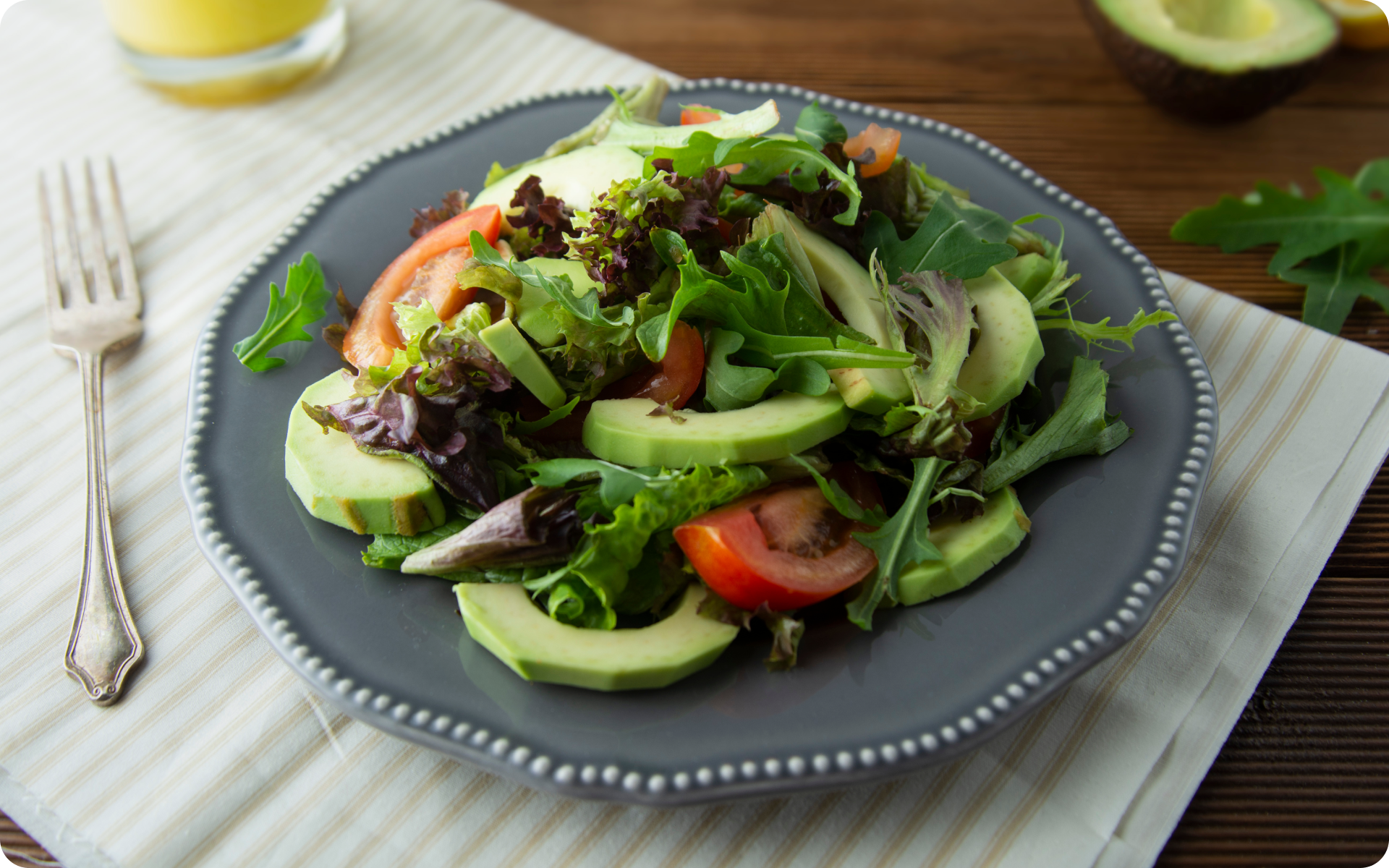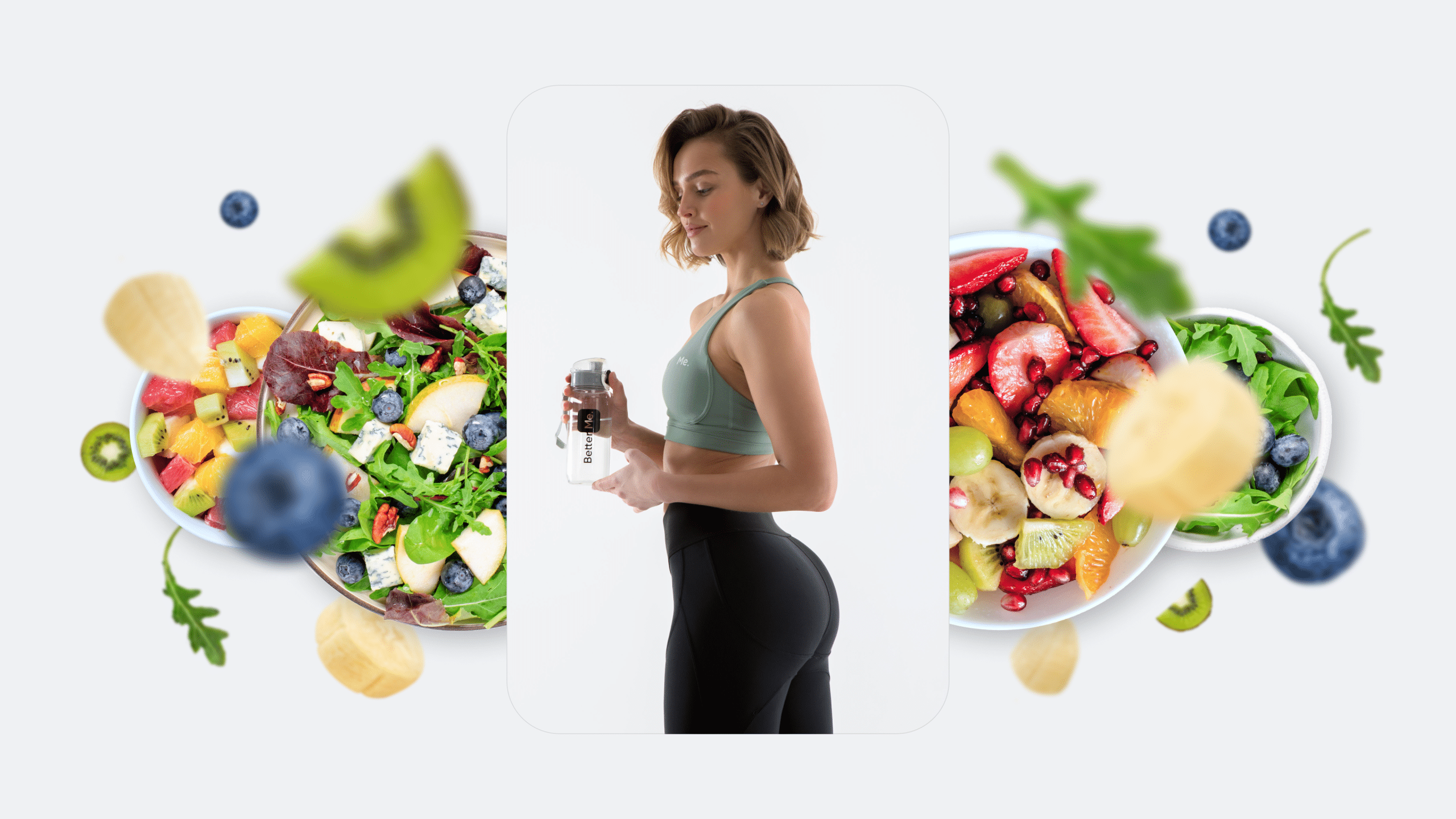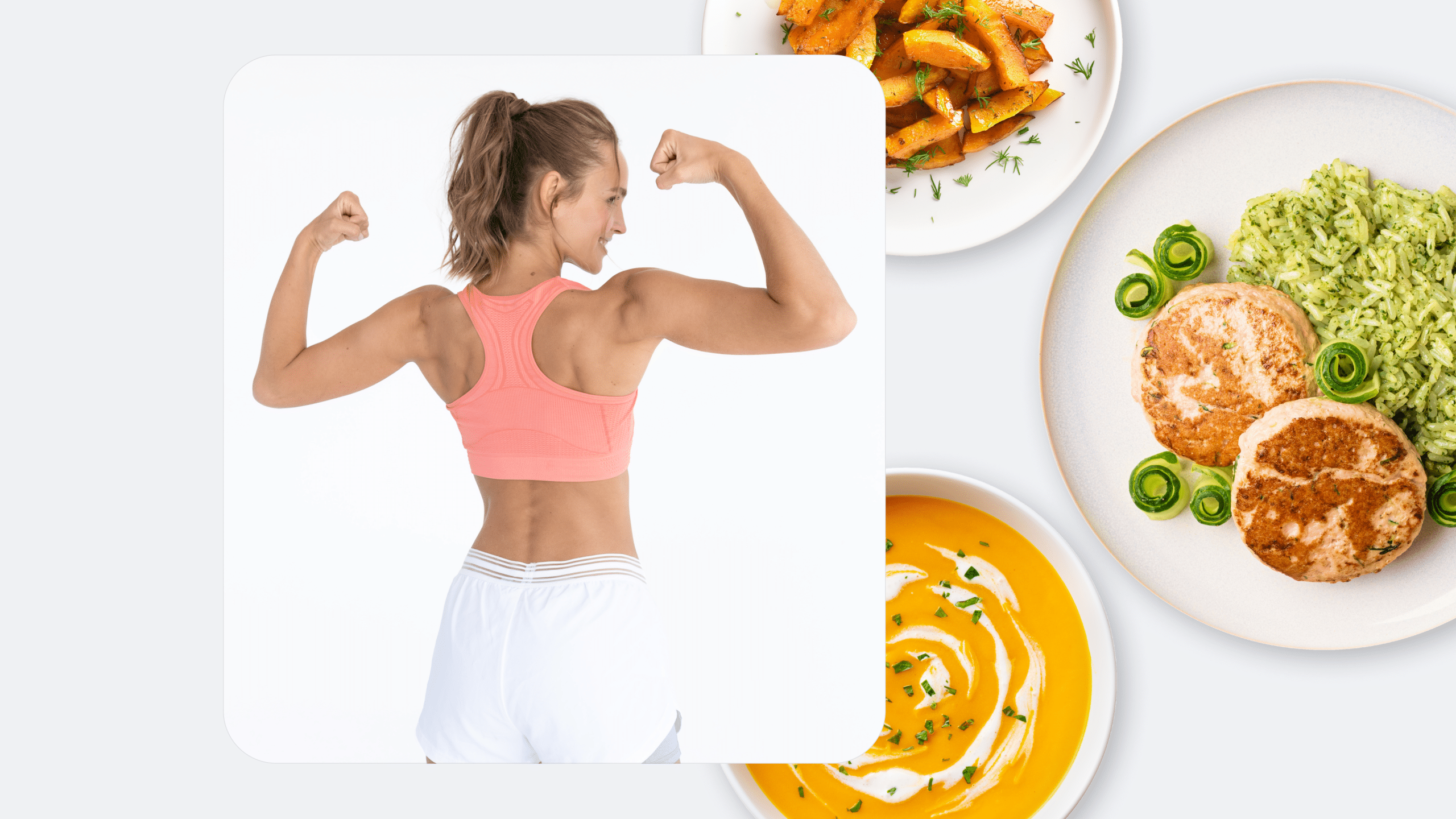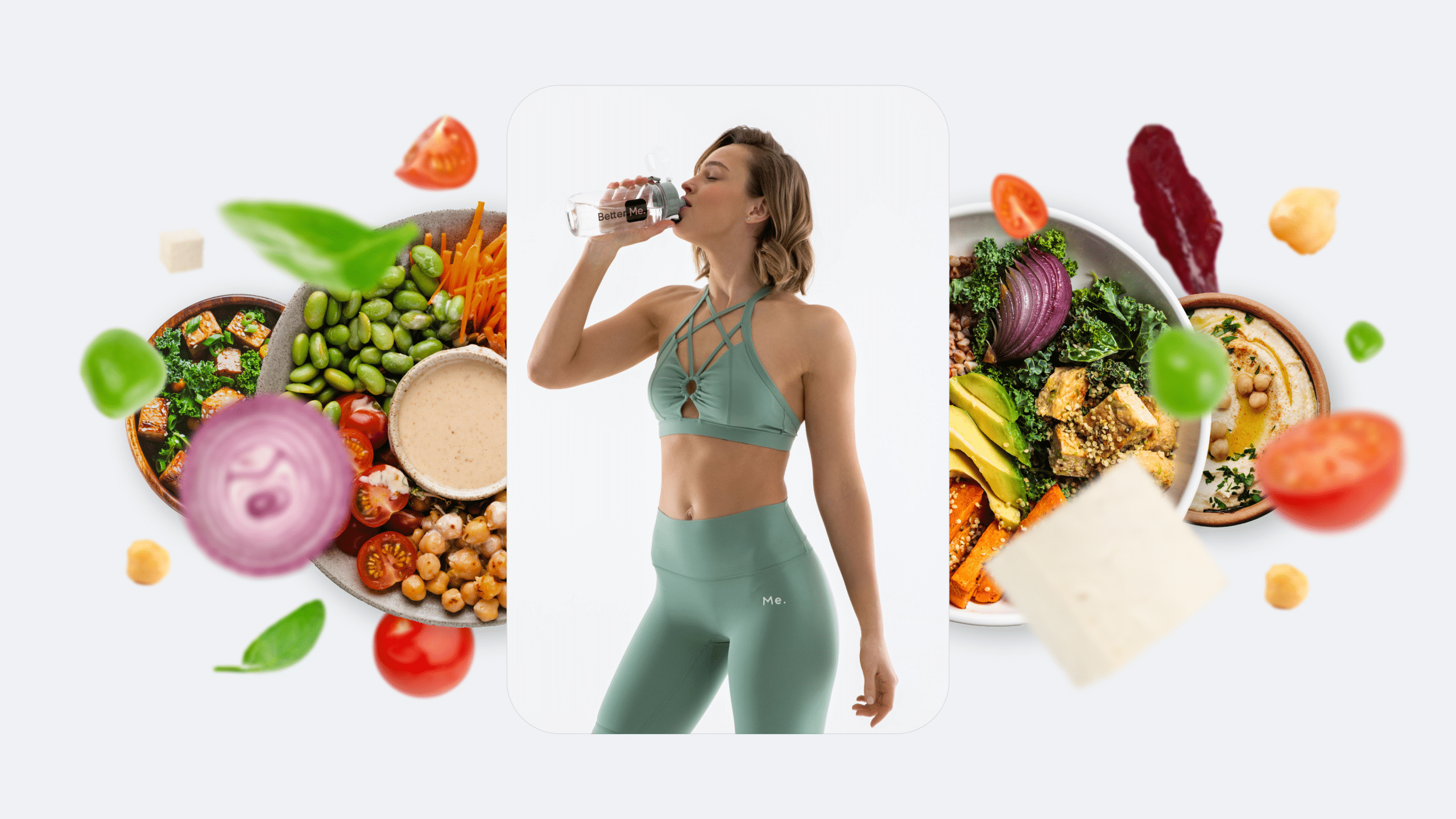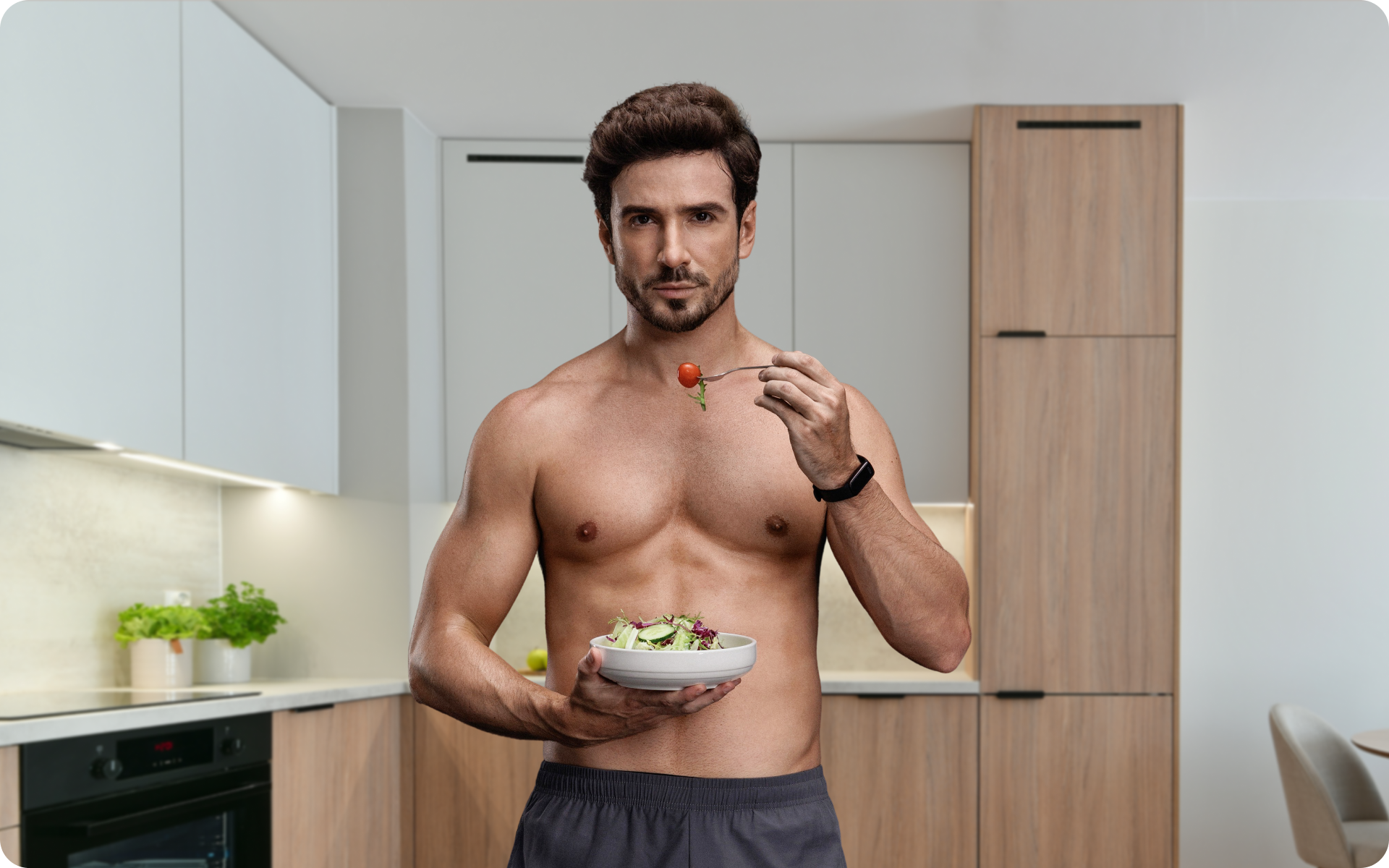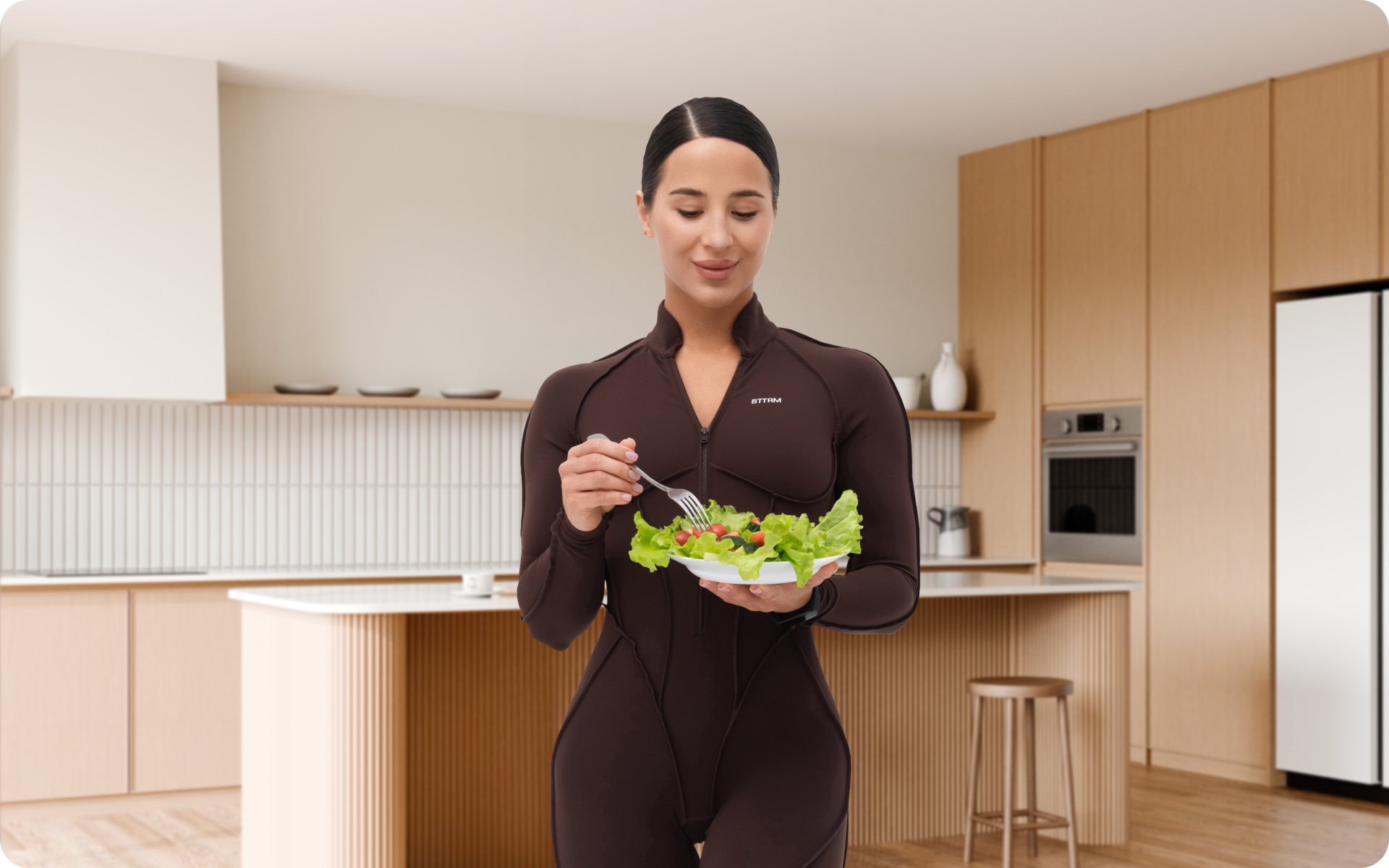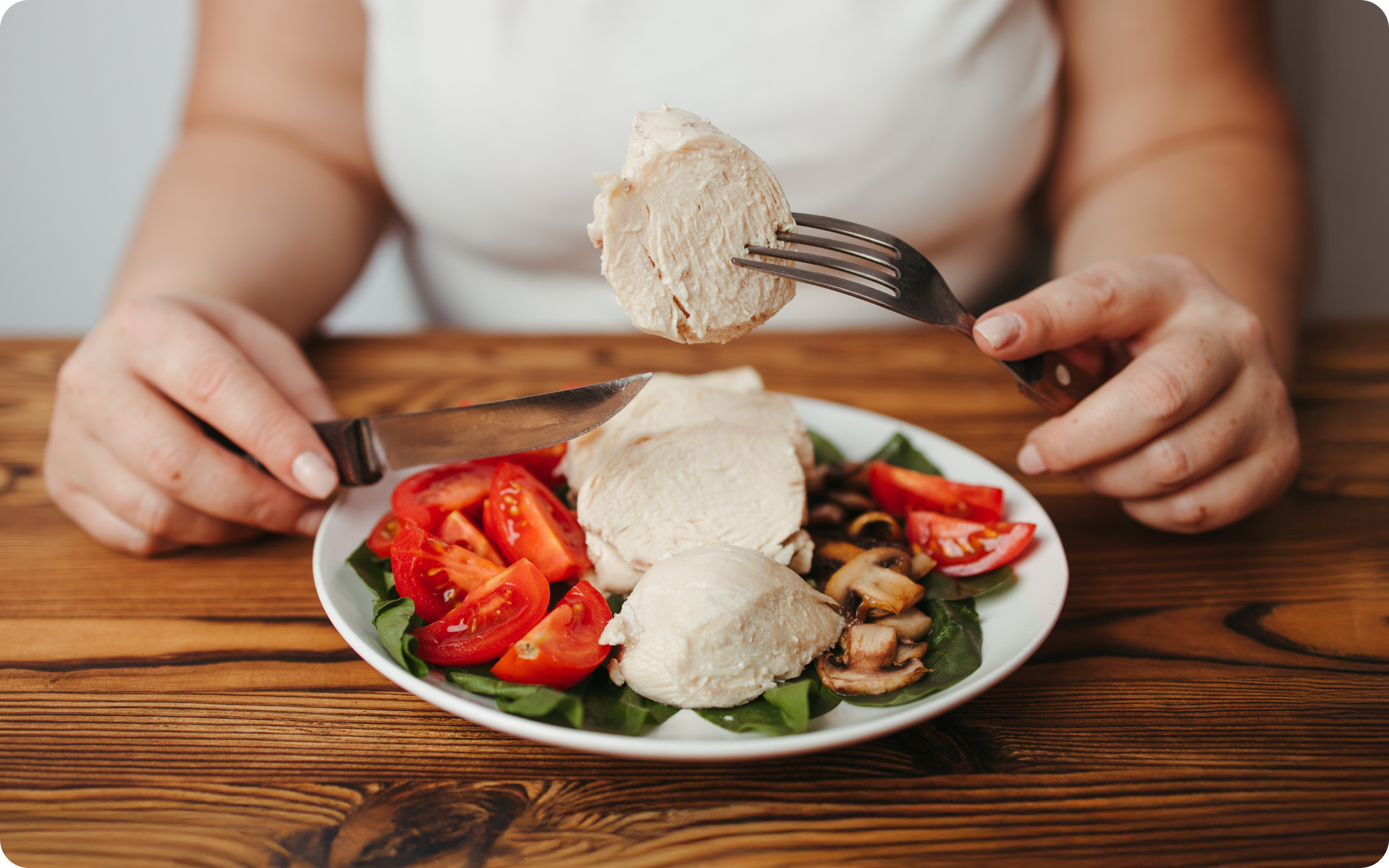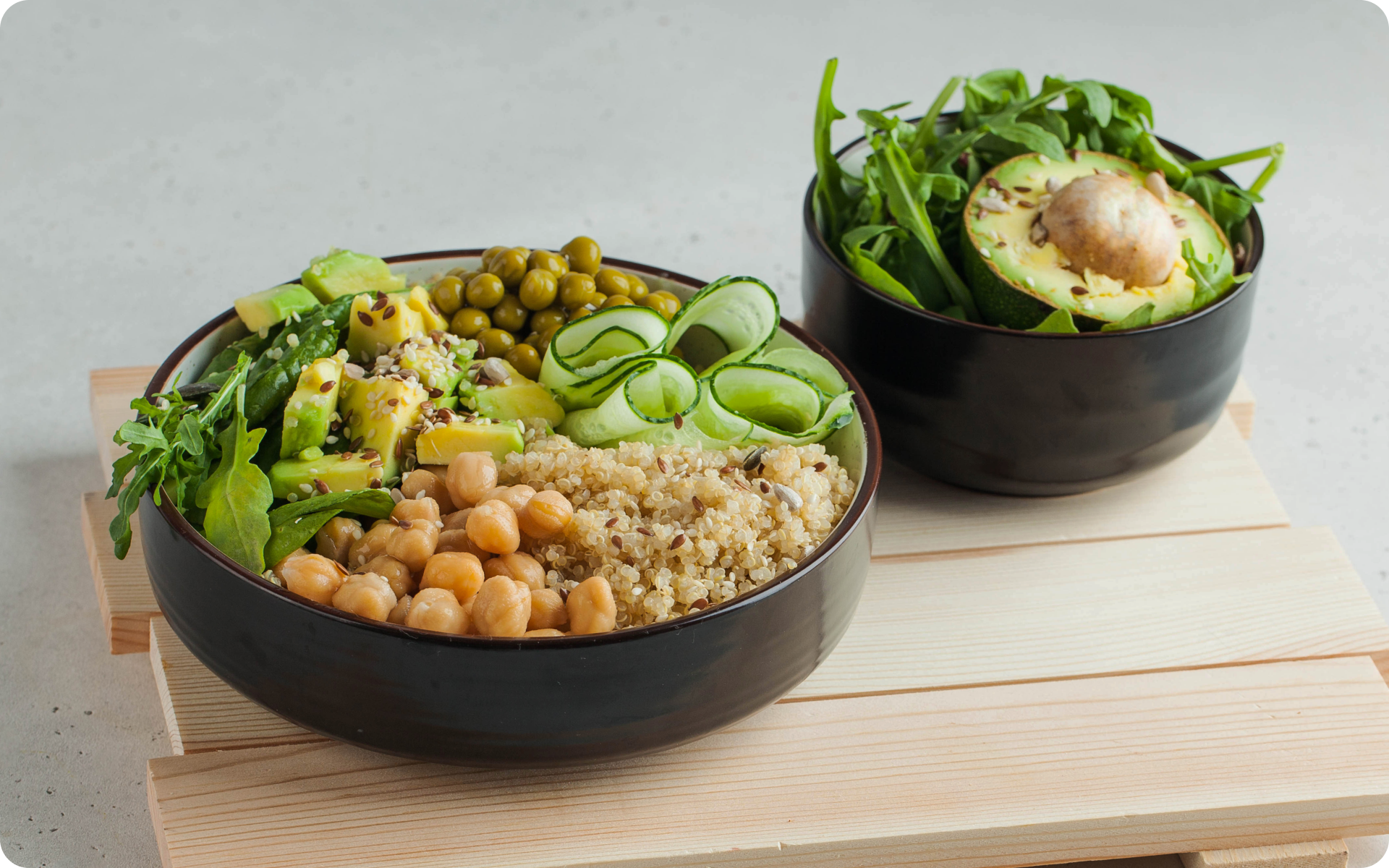Salads are widely recommended as a healthy and fresh alternative to fried food and many other unhealthy foods. They can differ substantially in terms of nutritional value, depending on their ingredient list. Generally, salads have a reputation for being the healthiest meal you can have. This is likely the reason that some have proposed a 30-day salad diet – a dietary plan that focuses on the consumption of various salads.
Could it be a healthy alternative to other types of dietary regimes, or is it ultimately ineffective? Should you look for other plans to lose your extra pounds effectively? Read this article to find out everything about healthy salad making and its potential in your daily menu.
What Does a Healthy Diet Look Like?
Before understanding whether or not a 30-day salad diet plan is what you need, let’s take a look at the basics of a healthy diet.
Essentially, a healthy diet is one that satisfies all the basic demands of your body. It should deliver all the necessary nutrients for your body to function optimally.
People often look for possibilities to change their diet when they’re trying to lose weight or when they’re already struggling with some health issues. However, a balanced diet is what you need regardless of your aims; it is a vital necessity for your body.
Many studies have established the connection between a healthy diet and reduced obesity, in addition to lowered risks of chronic diseases that are tied to obesity, such as cardiovascular disease, diabetes, high blood pressure, and some cancers (8, 12).
According to the USDA, approximately half the food you eat should be fruit and vegetables (16). Other food groups that are indispensable for a proper diet include low-fat dairy, lean proteins (particularly from plant sources or seafood), legumes, whole grains, and healthy fats.
Another thing you need to know is that most adult women require between 1,600 and 2,000 calories per day in order to maintain the proper functioning of their body and good immunity and avoid health issues (13).
A healthy weight loss rate is 1-2 pounds per week, which can be achieved by maintaining a calorie deficit of 500 calories per day through diet and regular exercise (9).
BetterMe App helps you achieve your body goals with ease and efficiency by helping to choose proper meal plans and effective workouts. Start using our app and you will see good results in a short time.
What Is a 30-Day Salad Diet?
A 30-day salad diet is a diet that emphasizes the consumption of salads. It does not eliminate other dishes, but you’ll need to receive a larger part of calories from salads than you previously did.
It is difficult to say outright whether a salad diet is healthy or not for one simple reason: you can make a salad using literally anything from kale to fried chicken.
So, theoretically, a 30-day salad diet can be healthy and yield weight loss, but you need to be thoughtful when you choose your ingredients and dressings.
The widespread belief is that all salads are low-calorie, but this is a false belief. In fact, many salads with heavy dressings and other high-calorie ingredients are not weight-loss friendly at all.
For example, a famous grilled chicken Caesar salad contains as much as 770 calories (15), so you can increase the number of salads in your diet, but you need to know the ingredients to choose and avoid, in addition to counting your calories to maintain a calorie deficit.
Is salad good for you? That depends on how you make it.
What to Eat on a Salad Diet
What are the best salad ingredients? There are quite a lot. If you want to increase your consumption of salads, you need to ensure a proper protein, fat, and carb intake. Here are some of the best ingredients to make your salads delicious and nutritious.
Read more: 7 Types of Salad to Add Color and Crunch to Your Plate
If you want to make your salad low-calorie, a great choice for your base is leafy greens.
Leafy Greens
Double down on kale, collard greens, spinach, arugula, and watercress whenever you decide to make a salad.
Leafy greens are incredibly good for our bodies and brains. Studies have suggested that a diet that contains plenty of leafy greens is linked to a reduced risk of heart disease, certain cancers, macular degeneration, and type 2 diabetes. They may also help keep your memory sharp as you get older (4).
Not only are they an amazing source of nutrition for our bodies, leafy greens are also a great way to add color, texture, and flavor to your salad. Iceberg, bibb, romaine, escarole, and frisee all make a perfect base for your healthy salad.
To get lots of healthy nutrients, pack your salad with vegetables from each color category (14).
Vegetables
- Red vegetables include tomatoes, radishes, red onions, red peppers, cubed beets, and red potatoes.
- Orange vegetables include carrots, orange peppers, squash, orange tomatoes, and sweet potatoes.
- Yellow and white vegetables include sweet onions, cooked fresh corn kernels, yellow tomatoes, yellow beets, jicama, mushrooms, finely sliced shallots, cauliflower, and white asparagus.
- Blue or purple vegetables include purple potatoes, purple cabbage, purple peppers, and eggplant.
- Green vegetables include green onions, green tomatoes, artichoke hearts, peas, broccoli, cucumber, Brussels sprouts, and celery.
The benefits of vegetables are almost limitless. Firstly, most vegetables are naturally low in fat and calories. Vegetables are a crucial source of many nutrients, such as potassium, dietary fiber, folate (folic acid), vitamin A, and vitamin C.
Eating lots of fruits and vegetables as part of your nutritious dietary plan may reduce the risk of heart disease, including heart attack and stroke, in addition to cancers (10).
That being said, leafy greens and vegetables should form the base of your salad. However, if you’re following a diet that is based on salads, it’s essential to include healthy sources of fats and protein in your diet.
Fats
The most popular and healthy sources of fat you can add to salads include the following:
- Avocados (1-2 tablespoons per serving)
Avocados are an incredibly healthy fruit that is often referred to as a superfood. A single serving of avocado contains 160 calories, 2 grams of protein, 15 grams of healthy fats, and the following nutrients (2):
- Vitamin K: 18% of the daily value (DV)
- Folate: 20% of the DV
- Vitamin C: 11% of the DV
- Potassium: 10% of the DV
- Vitamin B5: 28% of the DV
- Vitamin B6: 15% of the DV
- Vitamin E: 14% of the DV
Potassium is an essential element for the functioning of your body, and avocados have lots of it. It is also loaded with fiber, monounsaturated fatty acids, and other necessary nutrients.
- Olive oil (1-2 tablespoons per serving)
Extra virgin olive oil contains over 30 different types of phenolic compounds, which are extremely strong antioxidants. The monounsaturated fats of olive oil also contribute significantly to the benefits of this product.
A diet that is high in monounsaturated fat is connected to positive effects on the risks of cardiovascular disease, heart disease, and stroke. In addition, monounsaturated fats from olive oil may help reduce chronic inflammation, blood pressure, cholesterol levels, and blood glucose levels (6).
- Nuts (10-15 nuts per serving)
Nuts provide your body with essential nutrients, proteins, healthy fats, and antioxidants (3). Full of calcium, magnesium, and monounsaturated fats, nuts are one of the best fat sources you can add to a salad.
- Seeds (sunflower, chia, pumpkin)
Seeds are an excellent source of fiber. They also contain healthy monounsaturated fats, polyunsaturated fats, protein, and many important vitamins, minerals, and antioxidants (3).
If you wish to free yourself from all the extra pounds that have been weighting you down for way too long, start using the BetterMe app and overhaul your entire life!
Protein
If you want your salad to satisfy your hunger cravings for hours, you can’t avoid adding a source of protein to your bowl.
Protein is absolutely essential for your body, playing a major role in numerous processes in the body (11). In addition, proteins are indispensable if you’re physically active and want to grow muscle (5).
Some great sources of protein include seafood with its multiple health benefits, whole grains such as quinoa, wild rice, brown rice, and barley, seeds, nuts, legumes, and lean poultry or meat. It’s important to keep in mind that consuming an excessive amount of red meat can have adverse effects on your body.
Herbs
An excellent way to add flavor to your salad is by chopping some herbs into it. Most salad dressings are made with herbs and oil, but other ingredients often make most dressings incredibly high-calorie.
The best decision is skipping the bottled dressing and adding herbs on their own or together with a healthy fat and acid instead. Look for basil, chervil, chives, cilantro, dill, parsley, tarragon, or thyme in your local store.
These are the main components of your healthy salads. A 30-day salad diet may have profound results if you make your salads from healthy ingredients. By contrast, here are some ingredients you should probably avoid.
What to Avoid on a 30-Day Salad Diet
Bacon
The bacon on top of your salad may add a shocking 400 calories and 30 grams of fat (15). Most types of bacon are not healthy and contain a lot of saturated fat, extra salt, and sugar. Skip the bacon and use healthy lean sources of protein listed above instead.
Croutons
Croutons aren’t a disaster, but they are mostly refined grain products that add little more than calories to your salad. If you’re counting calories on a 30-day salad diet, avoid them.
Fried Anything
Chicken, shrimp, and fish are all healthy salad ingredients. However, when they’re deep fried, they become full of extra fat and calories that you certainly don’t need. Choose other, more healthy cooking methods for your proteins.
Deli Meat
A tiny slice of salami will add 43 calories to your salad and there may be 4-5 slices in your salad. Get rid of deli meat and stick to lean chicken or turkey.
Read more: Wholesome Seaweed Salad Recipes for Wellness
FAQs
Will I lose weight if I eat salads for 30 days?
Whether you will lose weight or not by eating salads for 30 days is dependent on what’s in your salads and how much you eat. As with any other diet, if you don’t create a calorie deficit, you won’t lose weight (7).
Find out more about salads and weight loss in our previous blog post: Is Salad Good For Weight Loss? What Science Says About This
Let’s review both concepts; what’s in your salads and how much of it you eat.
What’s in your salads?
Salads are generally made with a combination of greens, vegetables, fruits, nuts, seeds, protein sources such as chicken or fish, and dressings. Depending on what ingredients you include in your salads, the nutritional value can vary significantly.
For example, if you make a salad with mostly leafy greens, vegetables, and lean protein sources such as chicken or fish, it can be a nutrient-dense meal that is low in calories.
However, if you add high-calorie ingredients such as croutons, cheese, bacon bits, and creamy dressings, your salad can quickly turn into a calorie bomb.
Be on the lookout when you eat out too. Choose salad options with healthy ingredients such as vegetables and lean protein (1).
Check out our post 7 Types of Salad to Add Color and Crunch to Your Plateau for salad meal ideas.
Therefore, when following the 30-day salad diet, it’s important to be mindful of what ingredients you include in your salads and how much of each ingredient you use.
How much of it do you eat?
As mentioned earlier, creating a calorie deficit is essential for weight loss (7). This means consuming fewer calories than your body needs to maintain its current weight.
Even if your salad is made with healthy and nutritious ingredients, eating too much can contribute to weight gain.
For example, a large salad with high-calorie ingredients such as cheese and creamy dressings can contain over 1,000 calories, which is more than some people’s recommended daily intake if eaten twice in a day.
Therefore, portion control is important when you follow the 30-day salad diet. It is recommended to use measuring cups or a food scale to ensure you’re not consuming too many calories.
What is the 30-day salad challenge?
The 30-day salad challenge is a popular dietary plan that focuses on eating salads as the main component of every meal. The challenge encourages people to eat at least one salad a day for 30 consecutive days.
The goal of this challenge is to promote healthy eating habits and increase the consumption of fresh, nutrient-dense foods such as fruits and vegetables. It also aims to decrease the intake of ultra-processed and high-calorie foods.
You need to be careful not to use the 30-day salad challenge as a crash diet, where you only consume salads and drastically reduce your calorie intake. This can be harmful to your overall health and cause nutrient deficiencies.
The best approach is to make salads a regular part of your daily menu while also ensuring you consume enough calories and nutrients.
What happens if I eat only salads for a week?
If you eat only salads for a week, you may experience weight loss due to the calorie deficit created by consuming mostly low-calorie foods. However, this can also lead to fatigue, nutrient deficiencies, and an unhealthy relationship with food.
The outcome of eating only salads for a week is largely dependent on what you put in your salads. If you consume a variety of fresh and nutritious ingredients and eat enough to sustain your body’s needs, the results may be positive.
However, if you only eat a small amount of salad with limited ingredients or consume high-calorie dressings and toppings, the outcomes may not be as beneficial.
Will I lose belly fat if I eat salads every day?
You may lose belly fat if you eat a salad every day, but the result is ultimately dependent on your overall dietary habits and lifestyle (17).
If you’re creating a calorie deficit through regular exercise and other healthy food choices, adding salads to your daily menu can contribute to weight loss. That’s not to say that salads will directly target belly fat, as spot reduction (targeting fat in a specific area) is not possible.
However, incorporating salads into your daily diet can be a healthy and nutritious way to support overall weight loss.
The Bottom Line
To summarize, a 30-day salad diet is a great choice if you love salads and you carefully choose all the ingredients.
A healthy salad consists of leafy greens, vegetables, some healthy sources of fat and protein, herbs, and oil. However, a 30-day salad diet is neither a magical solution to all your problems nor a particularly effective dietary plan.
Including more salads instead of less nutritious foods in your diet is reasonable, but exclusively consuming salads for weight loss purposes is not. With that in mind, keep a balanced attitude, don’t forget to exercise regularly, and keep your fluid intake high to get the slim and beautiful body you’re striving for.
DISCLAIMER:
This article is intended for general informational purposes only and does not serve to address individual circumstances. It is not a substitute for professional advice or help and should not be relied on for making any kind of decision-making. Any action taken as a direct or indirect result of the information in this article is entirely at your own risk and is your sole responsibility.
BetterMe, its content staff, and its medical advisors accept no responsibility for inaccuracies, errors, misstatements, inconsistencies, or omissions and specifically disclaim any liability, loss or risk, personal, professional or otherwise, which may be incurred as a consequence, directly or indirectly, of the use and/or application of any content.
You should always seek the advice of your physician or other qualified health provider with any questions you may have regarding a medical condition or your specific situation. Never disregard professional medical advice or delay seeking it because of BetterMe content. If you suspect or think you may have a medical emergency, call your doctor.
SOURCES
- 36 Healthier Fast-Food Items at Every Restaurant Chain (2023, goodhousekeeping.com)
- Avocados, raw, all commercial varieties (n.d., nutritiondata.self.com)
- Consumption of Nuts and Seeds and Health Outcomes Including Cardiovascular Disease, Diabetes and Metabolic Disease, Cancer, and Mortality: An Umbrella Review (2022, sciencedirect.com)
- Dark Green Leafy Vegetables (2013, ars.usda.gov)
- Dietary Protein and Muscle Mass: Translating Science to Application and Health Benefit (2019, mdpi.com)
- Effects of Olive Oil on Markers of Inflammation and Endothelial Function—A Systematic Review and Meta-Analysis (2015, ncbi.nlm.nih.gov)
- Fat loss depends on energy deficit only, independently of the method for weight loss (2007, pubmed.ncbi.nlm.nih.gov)
- Healthy lifestyle factors in the primary prevention of coronary heart disease among men: benefits among users and nonusers of lipid-lowering and antihypertensive medications (2006, ncbi.nlm.nih.gov)
- Losing Weight | Healthy Weight, Nutrition, and Physical Activity | CDC (2023, cdc.gov)
- Nutrients and Health Benefits (n.d., choosemyplate.gov)
- Physiology, Proteins (2022, ncbi.nlm.nih.gov)
- Preventing cancer, cardiovascular disease, and diabetes: a common agenda for the American Cancer Society, the American Diabetes Association, and the American Heart Association (2004, ncbi.nlm.nih.gov)
- The 2015–2020 Dietary Guidelines for Americans ( 2015, choosemyplate.gov)
- The Best Salad Ingredients for Weight Loss (2020, verywellfit.com)
- The Worst Salad Ingredients for Weight Loss (2020, verywellfit.com)
- USDA MyPlate What Is MyPlate? (n.d., myplate.gov)
- What Happens to Your Body When You Eat Salad Every Day (2023, eatingwell.com)

